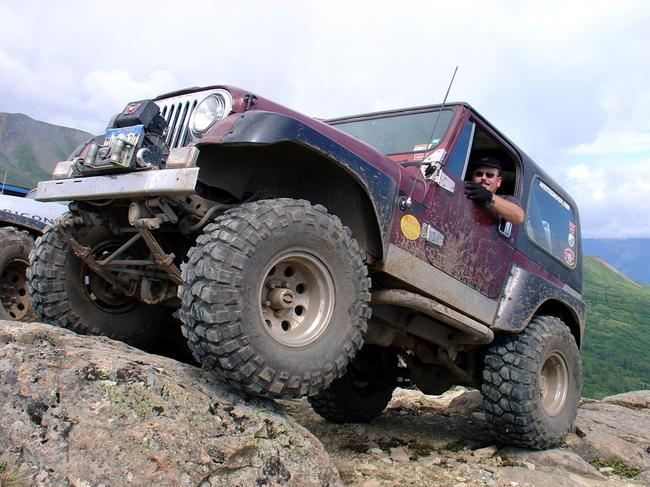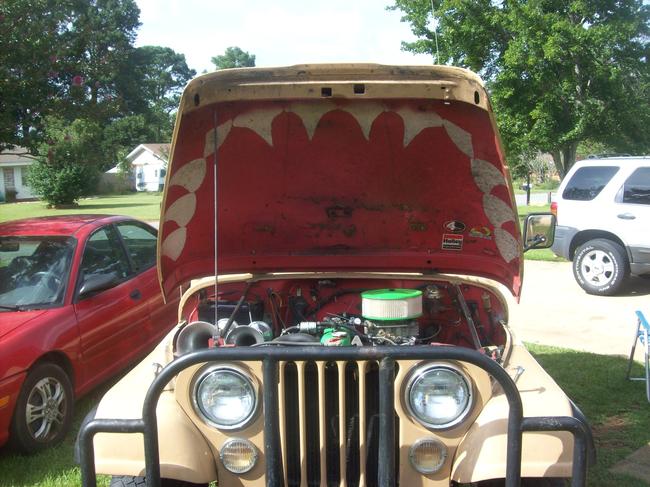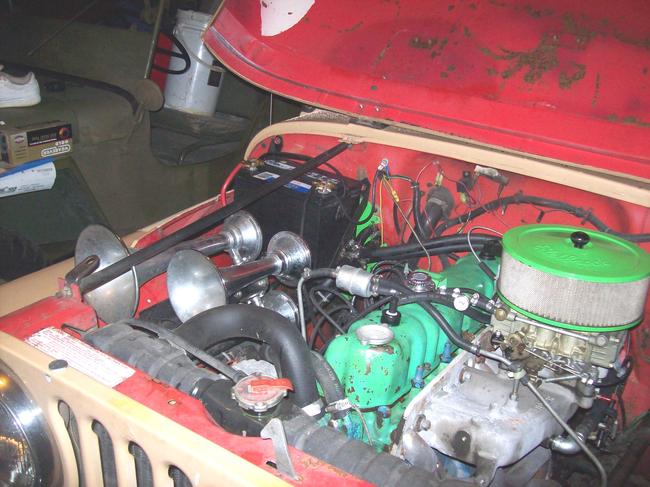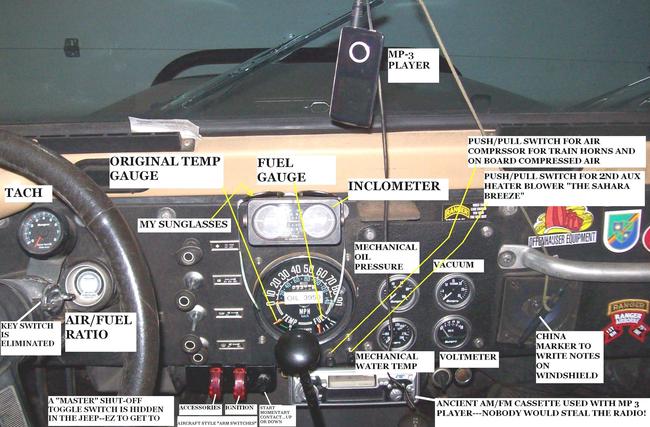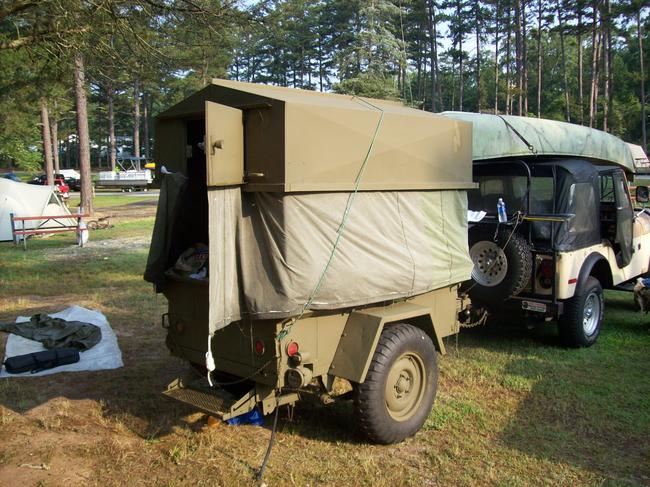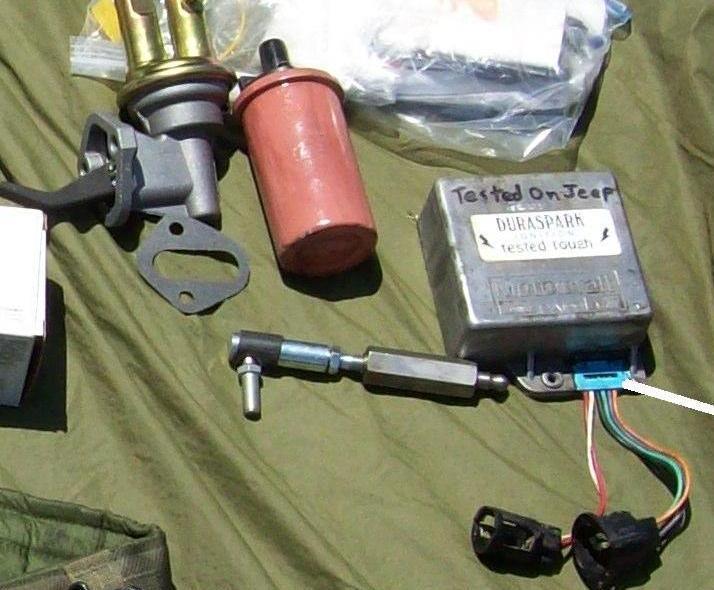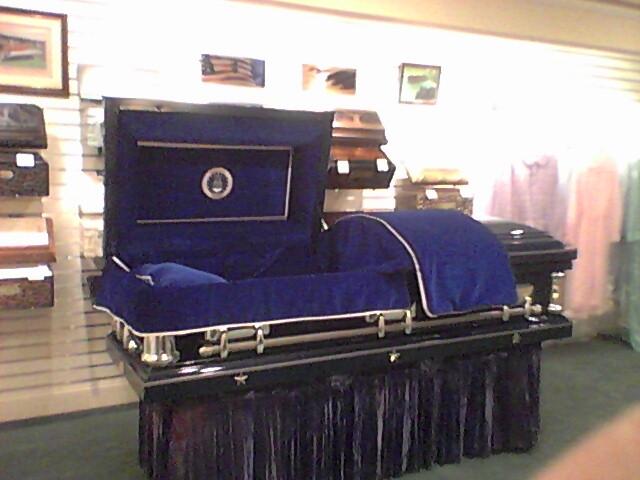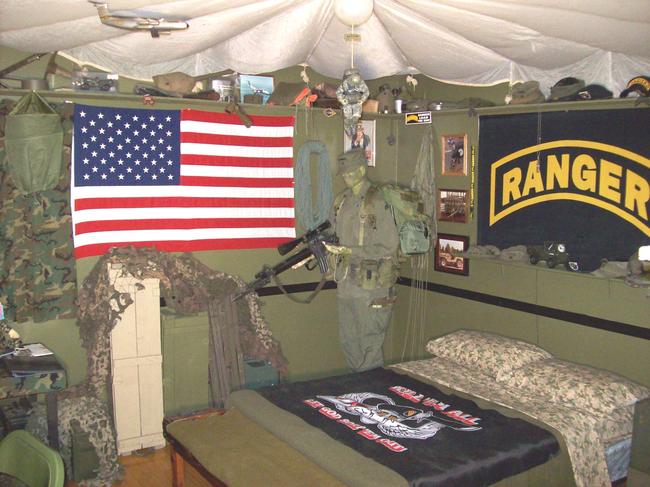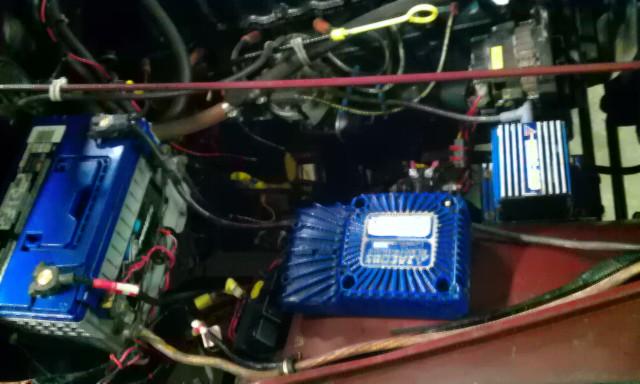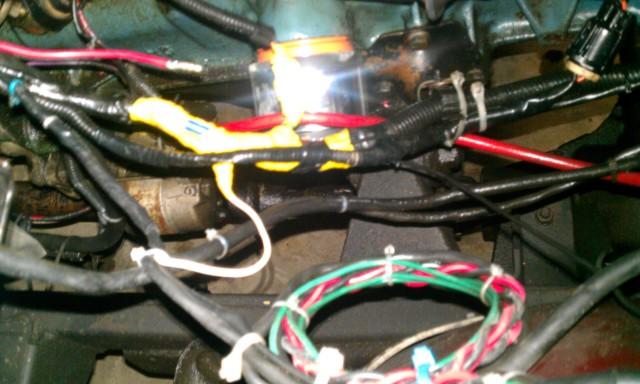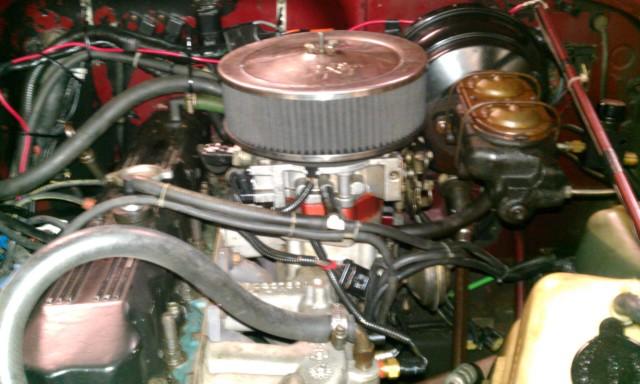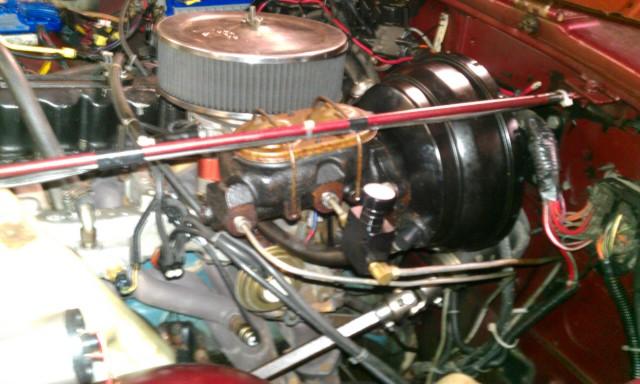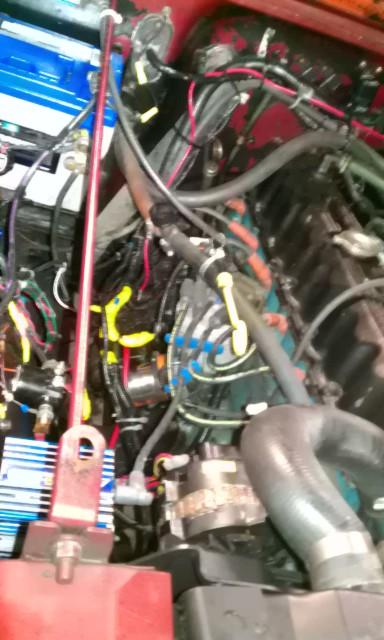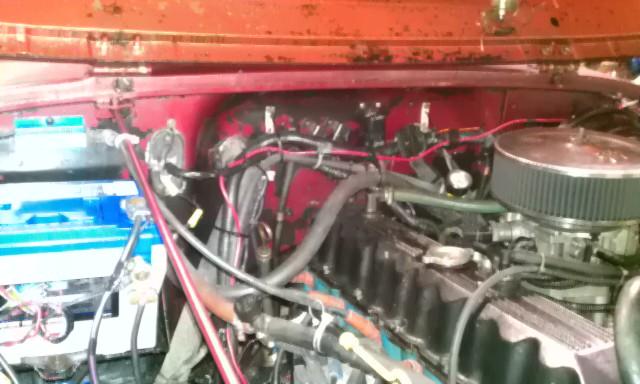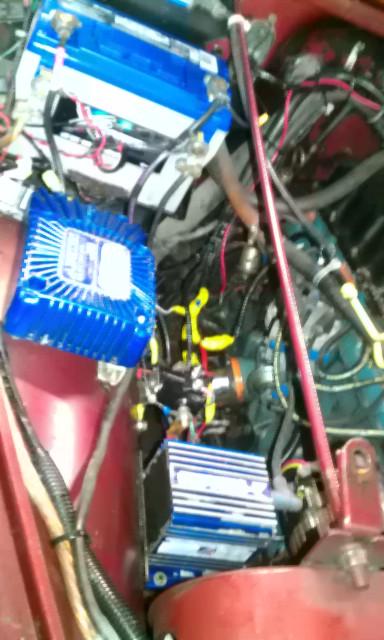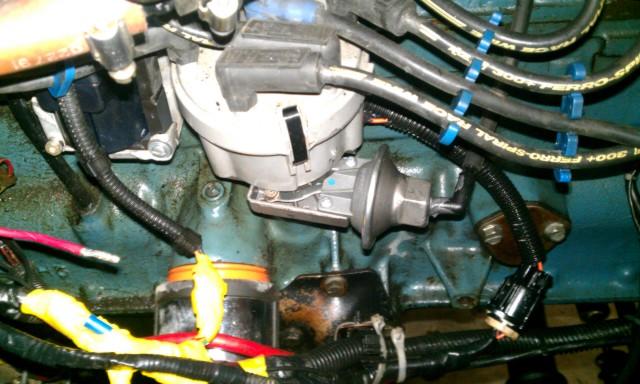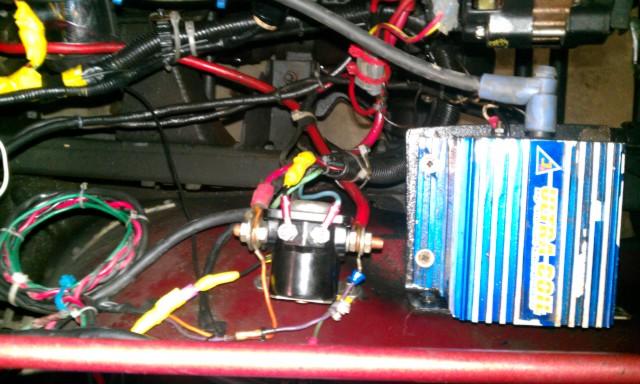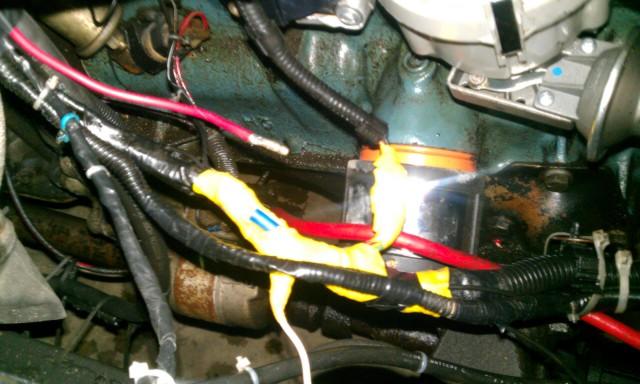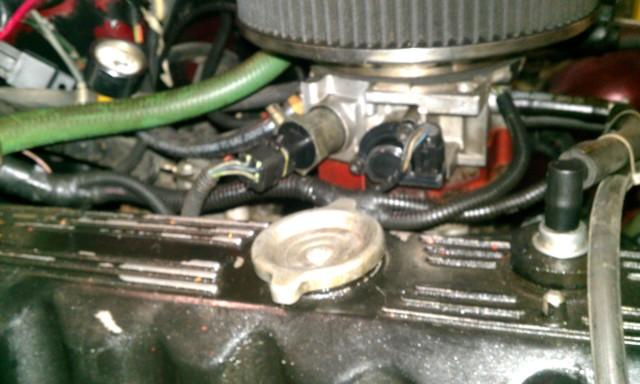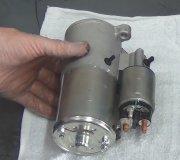Having a bear of a problem with my 1984 CJ7 Laredo. This is a MUCH modified CJ. 1979 258 block, .030 over, 4.0 HO head, Crane 260H cam, Clifford Headers, Fisher harmonic dampner, 258 manifold modified by Clifford modified to fit 4.0 head, Howell "California" TBI conversion, Jacobs "Prostreet" ignition Triggered by a Ford TFI coil, and Jeep OEM Ford Duraspark ECM, (since I use a GM ECM for the TBI, I don't use the Stock EECU. Ignition is wired direct instead of going through EECU) As much of a mechanics nightmare this may seem, it's been running like a top for about ten years with this configuration.
I had been experiencing hard start issues, and/or sudden cut out of the engine after driving enough to warm it up. THen I had to wait about an hour, and it would start? Go figure. I started throwing parts at it, when I should have been troubleshooting via wire diagram and a Multimeter. My TBI is essentially a Chevy 1990 4.3 V6 TBI set up without ignition control. It uses the following sensors: MAP, CTS, TPS, Heated O2. Also a fuel pump relay, and I use an in-line external fuel pump (Airtex E-2000), with a standard 500 CFM 4.3 TBI unit with adjustable fuel pressure regulator. "Alterstart" 180 amp alternator, and "Alterstar"t gear reduction starter.
Basically, it was losing reference pulse intermittently, causing it to either not start--OR die on me at the most inopportune time. Sooooo following advice from a few well meaning individuals---GRRRRR - I started Replacing sensors and electrical parts in this order:
1. Duraspark module-- seemed to fix for a bit. Then back to it's old tricks
2. Fuel Pump relay- ditto
3. Fuel Pump- ditto
4. Distributor Assy.- Ditto
5. TPS- Ditto
6. GM ECM (For TBI 1227747)- ditto
7. MAP- AND- Ignition Switch-- Ditto
8. Howell "Tach filter" (provides square wave for GM ECM to generate reference pulse, this had to be removed from the wiring harness, and a new one soldered in at the connections.)-
At this point it ran well for about an hour, then died about 6 miles from the house. I waited an hour. Then it started right up.
I finally got it home, and. Continued troubleshooting
9. Reference pulse wire to ECM- I thought the connections might be bad, so I removed the crimp connectors and soldered all the junctions and re- taped them.
10. Starter Solenoid- While I was at it I swapped in a new starter solenoid for good measure.
11. TFI Coil- -- why not, they're cheap.
After I did the last three items, the jeep fired right up, but would not keep running, I had to keep blipping the throttle to keep it going. I said hell with it and called it a night.
SO. The next day I figured Maybe it's not getting enough voltage to the coil. VIOLA- sure enough it was only getting 2.8 volts with the ignition in the "Run" position. I removed the tape from the wiring harness to find the end of the Resistance wire to the coil. I pulled off the bullet connect.2.8 VOLTS? Followed resistance wire to it's tie in point near the fuze box. I removed it. It ohms correctly, but I can get Full battery voltage at it's tie in point!
OK then. Resistance wire is BAD. Since a Ford TFI EEC COil runs full bat power, and the Duraspark ECM does as well, I made a 10 guage jumper wire and ran it in place of the resistor wire to give the TFI coil full Batt power.
I figured this will solve the weird issues.
I hook everthing up---- and. Now the engine won't crank. Battery power is good. I can't even hear the solenoid CLick! All fuzes good. I need to have someone put the ignition switch in the start position so I can check voltage to the light blue wire on the solenoid. I should get voltage there IF the ignition is in start position. I even swapped in another spare solenoid. No Dice.
I didn't touch any of the starter power wires when I was fixing splices.
Generally I'm pretty good at mechanical/electrical issues- this one has me stumped though!
I think if I get it to crank, the ignition reference pulse and coil power issues will be fixed. I hope. Any ideas on the "No CLick" No crank issues? Or anything else?
Thursday, May 2nd, 2013 AT 8:17 PM
